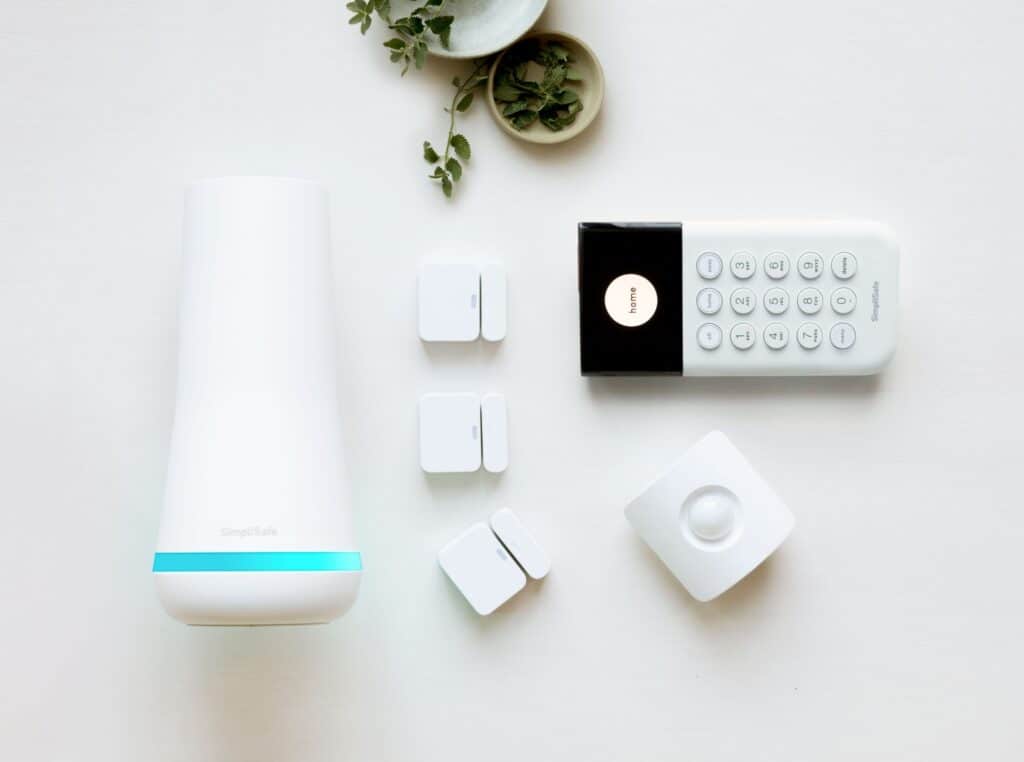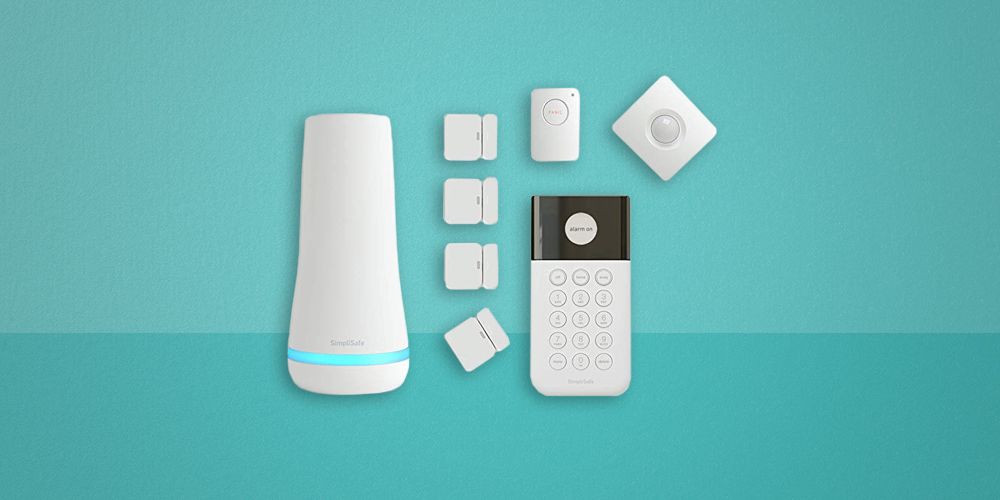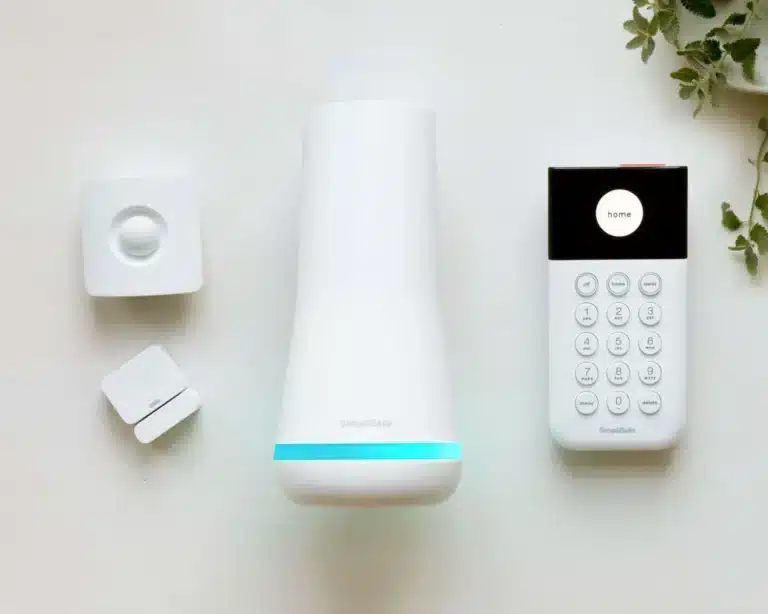Introduction
Why Is My Simplisafe Sensor Offline: Having a reliable home security system is essential for ensuring the safety and protection of your loved ones and belongings. SimpliSafe is a popular choice among homeowners, offering a range of sensors and devices to keep your home secure. However, it can be frustrating when one of these sensors goes offline, leaving you wondering why it happened and how to fix it.
Offline sensors can be a cause for concern, as they may leave your home vulnerable to potential threats. Understanding the reasons behind a SimpliSafe sensor going offline is crucial in order to take appropriate action and restore the functionality of your security system.
There can be several factors that contribute to a SimpliSafe door sensor going offline. One common reason is a loss of power or a weak battery. Sensors rely on power to function properly, and if the battery is low or completely drained, the sensor may go offline. It is important to regularly check the battery levels of your sensors and replace them as needed to prevent any disruptions in your security system.
Another possible cause for a SimpliSafe sensor going offline is a loss of connection to the base station. The base station acts as the central hub for all the sensors and devices in your security system. If the sensor is too far away from the base station or there are obstacles such as walls or interference from other electronic devices, it may result in a weak or lost connection.

How do I fix my SimpliSafe offline sensor?
Before jumping into the troubleshooting process, it’s essential to identify which sensor(s) are offline. Log in to your SimpliSafe account on your mobile app or through the web interface. Check the dashboard to see which specific sensor(s) are showing as offline. This will help you target your troubleshooting efforts accurately.
If none of the above steps work, it might be time to seek assistance from SimpliSafe’s customer support. They have trained experts who can guide you through more advanced troubleshooting or arrange for a replacement if the sensor is defective.
A reliable home security system is crucial for peace of mind, and resolving offline sensor issues is a key part of maintaining that reliability. By following the steps outlined in this guide, you can troubleshoot and fix offline sensor problems in your SimpliSafe system, ensuring that your home remains well-protected.
Ensure that the sensor is within the specified range from the base station. Remove any obstacles or interference sources between the sensor and the base station, such as metal objects or electronic devices. If possible, try repositioning the base station for better coverage.
Maintaining the functionality of your SimpliSafe home security system is crucial to ensure the safety of your property and loved ones. One common issue you might encounter is offline sensors, which can compromise the effectiveness of your system. However, fear not! This comprehensive guide will walk you through the step-by-step process to troubleshoot and fix offline sensors in your SimpliSafe setup.
What does it mean when a SimpliSafe sensor is offline?
When a SimpliSafe sensor is offline, it means that the sensor is not currently connected to the SimpliSafe base station or the monitoring system. This can occur due to various reasons, such as a loss of power, a weak or unstable Wi-Fi signal, or a malfunction in the sensor itself. Understanding why a SimpliSafe sensor goes offline is crucial for ensuring the security and functionality of the system.
Reasons for a SimpliSafe sensor going offline:
One common reason for a SimpliSafe sensor going offline is a loss of power. If the sensor is battery-powered and the battery runs out, the sensor will no longer be able to communicate with the base station. Similarly, if there is a power outage in the area, the sensor may lose power and go offline until power is restored.
Another possible cause for a sensor going offline is a weak or unstable Wi-Fi signal.
If the sensor relies on a Wi-Fi connection to communicate with the base station, a weak or unstable signal can disrupt the connection and cause the sensor to go offline. This can happen if the sensor is located too far away from the Wi-Fi router or if there are obstacles blocking the signal. In such cases, repositioning the sensor or improving the Wi-Fi signal strength can help resolve the issue.
Malfunctioning sensors can also lead to offline status.
If a sensor is malfunctioning or experiencing technical issues, it may go offline. This can happen due to various factors, such as a faulty sensor component or a software glitch. In such cases, troubleshooting steps like resetting the sensor or contacting SimpliSafe customer support may be necessary to resolve the issue and bring the sensor back online.
Overall, when a SimpliSafe sensor goes offline, it is important to identify the underlying cause and take appropriate steps to rectify the issue. Whether it is a power-related problem, a Wi-Fi signal issue, or a malfunctioning sensor, addressing the root cause will ensure the system’s reliability and maintain the security of your premises.
Why is my sensor offline?
Modern home security systems have become an integral part of maintaining the safety and peace of mind of homeowners.
One of the primary reasons for sensor offline issues is battery depletion. Many sensors, such as door/window contacts and motion detectors, rely on batteries for power. When the battery’s charge drops to a critical level, the sensor might go offline. Regularly checking and replacing batteries can help prevent this issue. It’s advisable to follow the manufacturer’s recommendations for battery replacement intervals.
Signal interference is another frequent culprit for sensor offline problems. Many home security systems use wireless communication between sensors and the central hub. Radio frequency (RF) interference from other electronic devices, walls, and obstacles can disrupt the signal between the sensor and the hub, causing the sensor to go offline. Placing the hub and sensors in strategic locations, away from potential interference sources, can help mitigate this issue.
Every wireless device, including security sensors, has a specific communication range. If a sensor is placed too far away from the central hub or base station, it might struggle to maintain a stable connection, leading to an offline status. To address this, ensure that sensors are positioned within the recommended range specified by the manufacturer. If necessary, consider repositioning the base station or adding signal extenders to cover larger areas.
Why is my SimpliSafe sensor not communicating?
If you are experiencing issues with your SimpliSafe sensor not communicating, there could be several reasons behind it. Understanding these potential causes can help you troubleshoot the problem and find a solution. Here are some possible explanations for why your SimpliSafe sensor is not communicating:
1. Distance from the base station:
One common reason for communication issues is that the sensor is placed too far away from the base station. SimpliSafe sensors rely on a wireless connection to communicate with the base station, and if the distance between them is too great, the signal may not reach. Try moving the sensor closer to the base station to see if that resolves the problem.
2. Interference:
Another factor that can disrupt communication between the sensor and the base station is interference from other electronic devices. Wireless signals from devices such as Wi-Fi routers, cordless phones, or even microwaves can interfere with the SimpliSafe sensor’s signal. Make sure the sensor is not placed near any potential sources of interference.
3. Low battery:
A low battery can also cause communication issues. If the battery in your SimpliSafe sensor is running low, it may not be able to transmit signals effectively. Check the battery level of the sensor and replace it if necessary.
4. Sensor malfunction:
In some cases, the sensor itself may be malfunctioning. This could be due to a hardware issue or a software glitch. Try resetting the sensor by removing and reinserting the batteries or following the manufacturer’s instructions for troubleshooting.
5. System compatibility:
Lastly, ensure that your SimpliSafe sensor is compatible with your SimpliSafe system. Different models and generations of SimpliSafe devices may have varying compatibility requirements. Check the user manual or contact SimpliSafe customer support to confirm compatibility.
By considering these potential causes and following the troubleshooting steps, you can identify and resolve the communication issues with your SimpliSafe sensor. If the problem persists, it may be necessary to reach out to SimpliSafe customer support for further assistance.
How do SimpliSafe sensors communicate?
SimpliSafe is a popular home security system that utilizes various sensors to ensure the safety of your home. These sensors play a crucial role in detecting and communicating potential threats or breaches. Understanding how SimpliSafe sensors communicate is essential to comprehend the effectiveness and reliability of this security system.
Communication Methods:
SimpliSafe sensors employ wireless communication methods to transmit data and information to the central monitoring station. This wireless communication ensures a seamless and reliable connection between the sensors and the control panel. The sensors use radio frequency signals to communicate with the control panel, allowing for quick and efficient transmission of data.
Signal Encryption:
To ensure the security and privacy of your home, SimpliSafe sensors utilize advanced encryption techniques. This encryption ensures that the signals transmitted between the sensors and the control panel are secure and cannot be intercepted or tampered with by unauthorized individuals. This level of encryption provides peace of mind, knowing that your home security system is protected from potential hacking or interference.
Range and Reliability:
SimpliSafe sensors have an impressive range, allowing them to communicate with the control panel even if they are placed at a considerable distance. This range ensures that the sensors can effectively cover a large area, providing comprehensive security coverage for your home. Additionally, the wireless communication technology used by SimpliSafe sensors ensures a reliable connection, minimizing the chances of signal loss or disruptions.
Battery Life:
SimpliSafe sensors are designed to have a long battery life, ensuring that they can operate efficiently without frequent battery replacements. This extended battery life is crucial for maintaining the continuous communication between the sensors and the control panel. With long-lasting batteries, SimpliSafe sensors can provide uninterrupted security monitoring for extended periods, enhancing the overall effectiveness of the system.
SimpliSafe sensors communicate through wireless radio frequency signals, employing advanced encryption techniques to ensure secure and reliable communication. With an impressive range, long battery life, and reliable wireless connection, SimpliSafe sensors provide comprehensive and efficient security coverage for your home.
What are the benefits of regular exercise?
Regular exercise offers numerous benefits for both physical and mental well-being. Firstly, engaging in regular physical activity helps maintain a healthy weight and reduces the risk of developing chronic conditions such as obesity, heart disease, and diabetes. Exercise also improves cardiovascular health by strengthening the heart and improving blood circulation. Additionally, it enhances lung function, leading to increased endurance and stamina.
Exercise is not only beneficial for physical health but also plays a crucial role in mental well-being. Regular physical activity stimulates the release of endorphins, which are known as “”feel-good”” hormones. These endorphins help reduce stress, anxiety, and symptoms of depression. Exercise also promotes better sleep patterns, leading to improved overall quality of sleep.
Is the sensor’s battery level a possible reason why my SimpliSafe sensor is offline?
When it comes to maintaining the functionality of your SimpliSafe home security system, one of the primary considerations is the battery level of your sensors. While these sensors play a critical role in keeping your home secure, they also rely on a power source to function effectively. If you’re encountering an issue where your SimpliSafe sensor appears to be offline, a low or depleted battery could very well be the root cause.
Most sensors in the SimpliSafe home security system are designed to operate wirelessly, which offers flexibility in placement and installation. However, this wireless functionality also means that these sensors require a power source, and in this case, batteries are the go-to solution.
When a sensor’s battery reaches a critically low level, it can result in a range of issues, including an offline status. This occurs because the sensor doesn’t have enough power to effectively communicate with the base station or hub. As a result, the sensor might not be able to send alerts, trigger alarms, or carry out its intended function when needed.
Could signal interference from nearby electronic devices be causing my SimpliSafe sensor to go offline?
Identify Nearby Devices: Identify electronic devices in your home that might be emitting RF signals in the same frequency range as your SimpliSafe system. Pay attention to their placement relative to your sensors.
Reposition Devices: If possible, try relocating devices that could be causing interference. Placing them farther away from the SimpliSafe sensors or adjusting their position might help reduce the interference.
Optimize Sensor Placement: Experiment with different placements for your sensors. Positioning them away from potential interference sources, such as large electronic devices or walls that could block signals, can help maintain a stable connection.
Use Signal Extenders: Depending on the layout of your home, you might consider using signal extenders or repeaters to enhance the coverage area of your security system. These devices can help ensure that signals from your sensors reach the base station without significant interference.

Conclusion
SimpliSafe sensor being offline can be attributed to various factors. It is important to understand that SimpliSafe is a wireless home security system that relies on a network connection to function properly. Therefore, if a sensor is offline, it indicates a disruption in the network connection or a problem with the sensor itself.
One possible reason for a SimpliSafe sensor being offline is a loss of internet connectivity. If the Wi-Fi network is down or experiencing issues, the sensor will not be able to communicate with the SimpliSafe base station. This can happen due to a variety of reasons, such as a power outage, router malfunction, or interference from other electronic devices. In such cases, it is recommended to check the internet connection and troubleshoot any network issues to restore connectivity.
Another potential cause for a sensor being offline is a low battery. SimpliSafe sensors are powered by batteries, and if the battery level is critically low, the sensor may door device go offline. It is advisable to regularly check the battery status of the sensors and replace them as needed to ensure uninterrupted operation. Additionally, environmental factors such as extreme temperatures or humidity can also affect the battery life and cause sensors to go offline.
Lastly, a malfunctioning sensor itself can be the reason for it being offline. Over time, sensors may develop faults or encounter technical glitches that prevent them from connecting to the base station. In such cases, troubleshooting steps like resetting the sensor or contacting SimpliSafe customer support may be necessary to resolve the issue. It is important to note that if multiple sensors are offline, it could indicate a larger system-wide problem that requires professional assistance.

